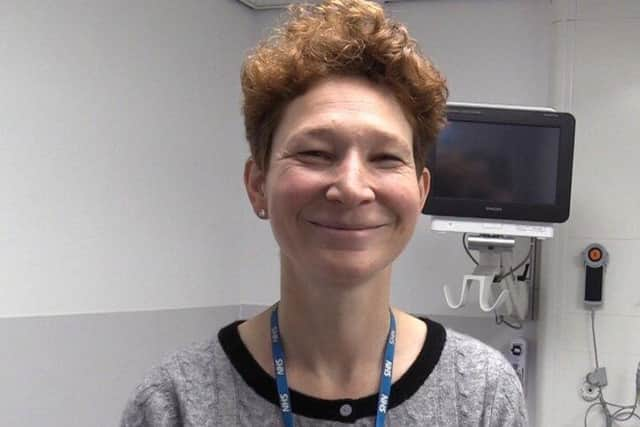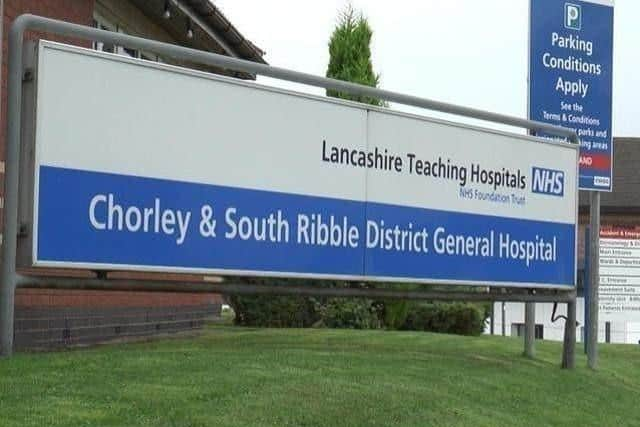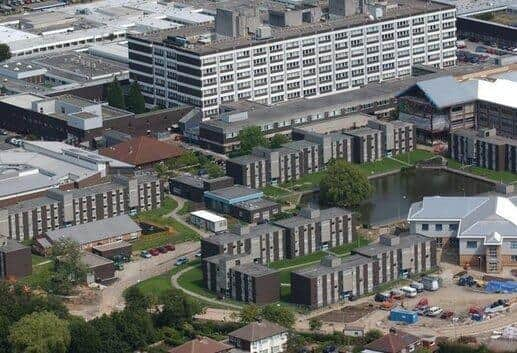Big drop in year-long waits at Preston and Chorley hospitals, but total list still stubbornly high
and live on Freeview channel 276
Waits of more than 52 weeks for procedures and appointments at the two facilities dropped from 5,990 in January to 4,368 by July, the latest month for which figures are available.
However, data published by NHS England on Thursday showed that the total number of patients waiting to be seen increased slightly over the same timeframe, from 58,507 to 59,682 – with almost 45 percent of them having waited longer than the NHS target standard of 18 weeks, slightly more the England average for July of just over 41 percent.
Advertisement
Hide AdAdvertisement
Hide AdThe dent made in year-long waits locally – even during a period of multiple nursing, junior doctor and consultant strikes – has been attributed by a senior executive at Lancashire Teaching Hospitals NHS Foundation Trust (LTH) to a catch-up unit for pre-planned surgery established at Chorley Hospital, which is ringfenced to protect it from day-to-day pressures.


Chief operating officer Faith Button told the Lancashire Post that the 13-theatre facility at the Euxton Lane site – one of more than a hundred elective care hubs set up nationwide – was helping the trust make “great progress” in clearing the backlog built up during the earlier part of the pandemic. In February 2020, just before Covid struck, LTH did not have a single patient waiting longer than a year.
Ms. Button also credited the facility – which is amongst just eight nationwide that have been given special accredited status – with helping make inroads into the trust’s waiting list for cancer treatment.
She said that the organisation had already surpassed an NHS England target that it was set for next March to have no more than 180 patients waiting longer than 62 days for their first treatment, from the date they were referred for investigation. The latest figure for the trust is 175, which was ”back to pre-Covid levels”, she added.
Advertisement
Hide AdAdvertisement
Hide AdHowever, on a separate national target for all trusts to start treating 85 percent of their cancer patients within 62 days, LTH sits at almost 47 percent, according to the NHS stats for July. The average across England that month was just under 63 percent.


The 62-day measure will remain one of a small number of nationwide cancer targets under a simplified system to be introduced next month, as will the more recently introduced 28-day “faster diagnosis” standard. That seeks to ensure that at least 75 percent of patients suspected of having cancer are told one way or the other within four weeks – and LTH is already just ahead of the target.
“It’s about telling people they have or haven’t got cancer really quickly – you’re referred, you get your diagnostic [test] and you know then what’s happening to you,” Faith Button said.
“[We] tell lots of people they don’t have cancer, which is great and they can get on with their lives.”
Advertisement
Hide AdAdvertisement
Hide AdOn waiting times, the next challenge that has been set for hospital trusts is for them to eradicate waits of more than 65 weeks by next March. In July, LTH had 1,165 patients who had been on its list for longer than that.


However, Ms. Button – who will take over as interim chief executive of the trust next month – says that it is “on track” to meet that aim, in spite of the hurdles that lie ahead. They include ongoing rounds of industrial action, to which there is no end in sight – with both consultant and junior doctor walkouts coinciding for the first time for 24 hours this coming Wednesday.
“It’s tough because of the strikes and obviously winter coming, but it is an absolute priority for us to keep working through those backlogs of parents who’ve been waiting significant amounts of time,” Faith Button pledged.
She expects that the winter ahead will not be much easier than the last, one that outgoing LTH chief executive Kevin McGee has previously told the Post was the worst the NHS had ever known.
Advertisement
Hide AdAdvertisement
Hide Ad“We know demand is going to be high – we’ll have flu…and Covid peaks again,” Ms. Button warned.
However, she is confident that the Chorley hub will play a big part in helping achieve future waiting list clearance targets – not least because of the rigorous process that it underwent in order to achieve its accreditation.
“Staff and training are assessed, the outcomes of all our patents are assessed, [as well as] the facilities and the fact you can ringfence [them], even in winter.
“They are all set out as key performance indicators…that you have to get [in order to be given] accredited status. So you can’t just say. ‘These are our ringfenced elective bits of the hospital’; the quality, standards and outcomes [are] a really important [measure that we are judged on].”
Advertisement
Hide AdAdvertisement
Hide AdThat same assessment will be made if the Chorley unit is also to be accredited as a paediatric elective care hub – a prospect which is on the horizon after the trust started giving over the facility exclusively to its youngest patients once every fortnight.
Although the most complex cases are still seen at the Royal Preston – and paediatric procedures are a fraction of the overall LTH waiting list – Faith Button says that it has been a worthwhile move for families.
“We put up posters and toys and change it into a [child-friendly] theatre suite. The children love it, we’ve had really good feedback.
“We’re getting through those [waiting] lists for children…within the same resource – and they’re not getting [their operations] cancelled.”
Advertisement
Hide AdAdvertisement
Hide AdTHE LENGTHIEST WAITING LISTS IN CENTRAL LANCASHIRE
The number of patients on Lancashire Teaching Hospitals’ waiting lists, by specialty (July 2023):
Neurology – 7,349
Surgical services (other, non-specified) – 7,086
Medical services (other, non-specified) – 5,354
Ophthalmology service – 4,354
Oral surgery – 4,304
Neurological – 4,235
Trauma and orthopaedic – 3,679
Plastic surgery – 3,363
General internal medicine – 3,027
Cardiology – 2.705
Ear, nose and throat – 2,159
Paediatric services (non-specified) – 2,064
Dermatology – 1,836
Gastroenterology – 1,705
Gynaecology – 1,417
General surgery – 1,322
Source: NHS England